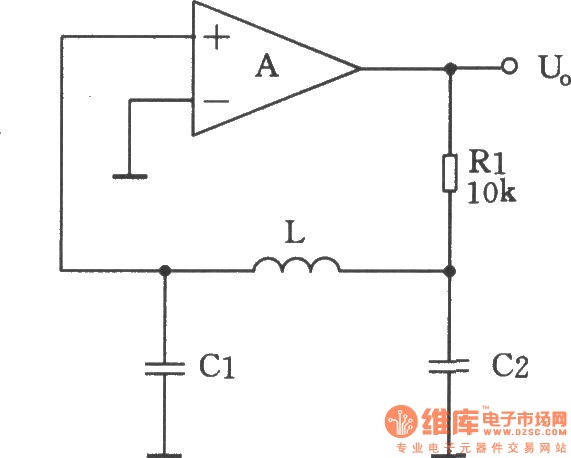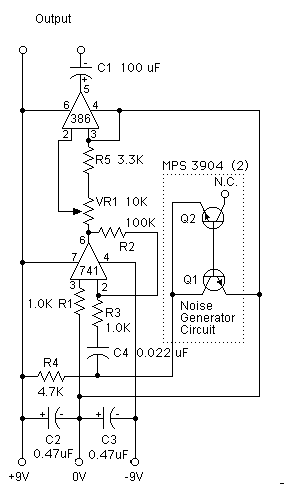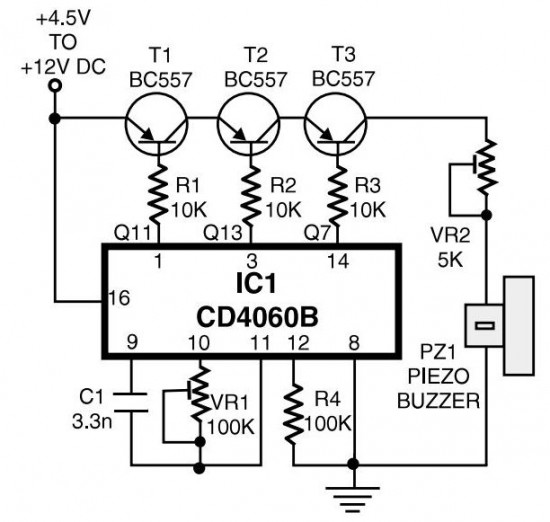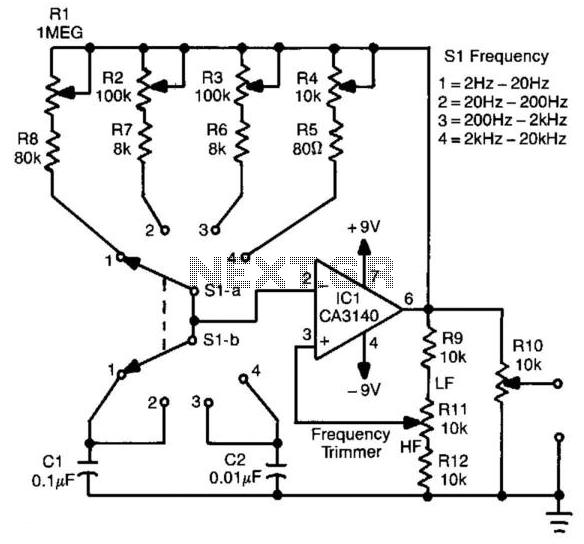
Multisound generator with description
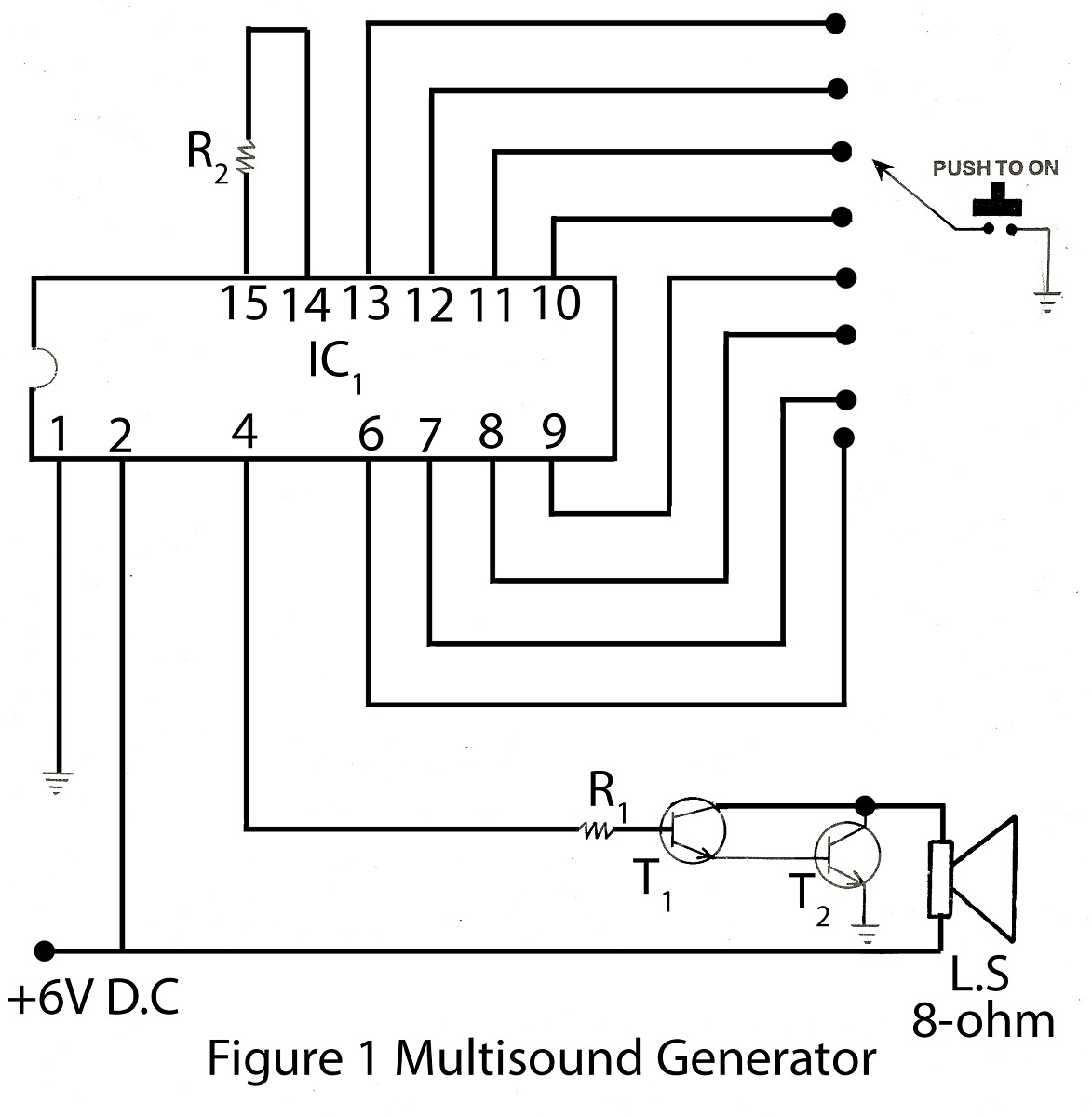
The multisound generator is an intriguing project within the alarm system series. This generator produces eight different types of sounds, and it includes a circuit diagram for various electronic projects.
The multisound generator circuit is designed to create a variety of audio signals, making it suitable for applications such as alarms, notifications, and sound effects in electronic devices. The core of the circuit typically consists of a microcontroller or a dedicated sound generation IC that can be programmed or configured to produce different tones and sound patterns.
The circuit may include components such as resistors, capacitors, and diodes which help shape the audio signals. A potentiometer can be incorporated to adjust the volume of the output sound, allowing for customization based on user preferences. Additionally, a speaker or piezo buzzer is connected to the output stage to convert the electrical signals into audible sound waves.
The power supply for the circuit can be derived from a battery or an external power source, ensuring that it operates efficiently. The layout of the circuit should be carefully designed to minimize interference and ensure clear sound output.
In terms of functionality, the multisound generator can be programmed to switch between different sound modes, enabling the user to select the desired sound for specific applications. This feature can be implemented through the use of push buttons or a rotary switch that allows for easy selection of sound profiles.
Overall, the multisound generator project not only demonstrates the principles of sound generation in electronics but also provides a practical application for creating engaging and varied audio alerts in various devices.Multisound generator is very interesting project in the series of alarm project multisound generator generates 8 different type of sound circuit diagram of.various electronics project. 🔗 External reference
The multisound generator circuit is designed to create a variety of audio signals, making it suitable for applications such as alarms, notifications, and sound effects in electronic devices. The core of the circuit typically consists of a microcontroller or a dedicated sound generation IC that can be programmed or configured to produce different tones and sound patterns.
The circuit may include components such as resistors, capacitors, and diodes which help shape the audio signals. A potentiometer can be incorporated to adjust the volume of the output sound, allowing for customization based on user preferences. Additionally, a speaker or piezo buzzer is connected to the output stage to convert the electrical signals into audible sound waves.
The power supply for the circuit can be derived from a battery or an external power source, ensuring that it operates efficiently. The layout of the circuit should be carefully designed to minimize interference and ensure clear sound output.
In terms of functionality, the multisound generator can be programmed to switch between different sound modes, enabling the user to select the desired sound for specific applications. This feature can be implemented through the use of push buttons or a rotary switch that allows for easy selection of sound profiles.
Overall, the multisound generator project not only demonstrates the principles of sound generation in electronics but also provides a practical application for creating engaging and varied audio alerts in various devices.Multisound generator is very interesting project in the series of alarm project multisound generator generates 8 different type of sound circuit diagram of.various electronics project. 🔗 External reference

